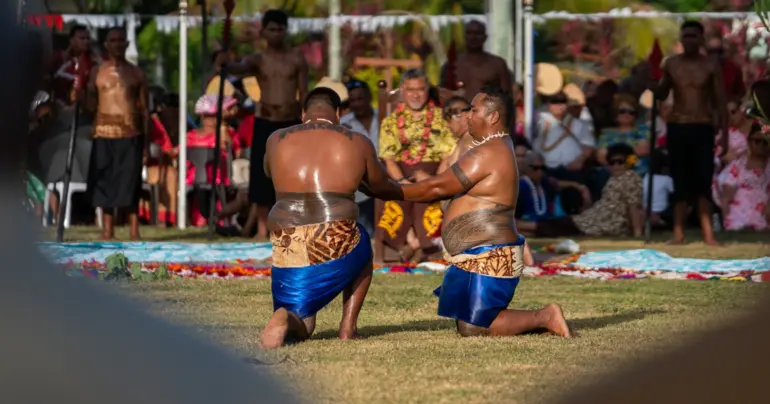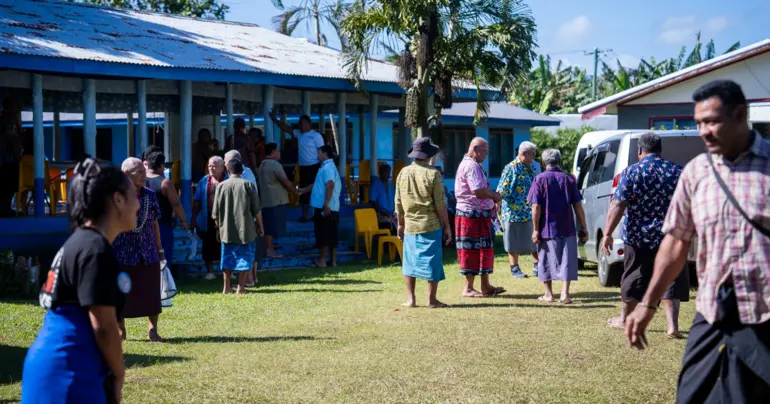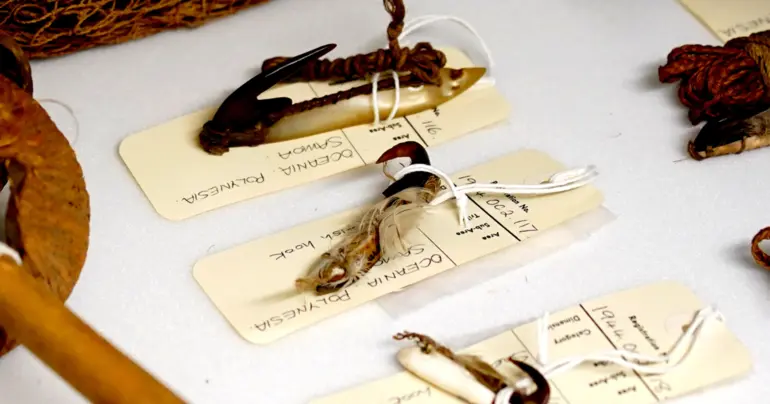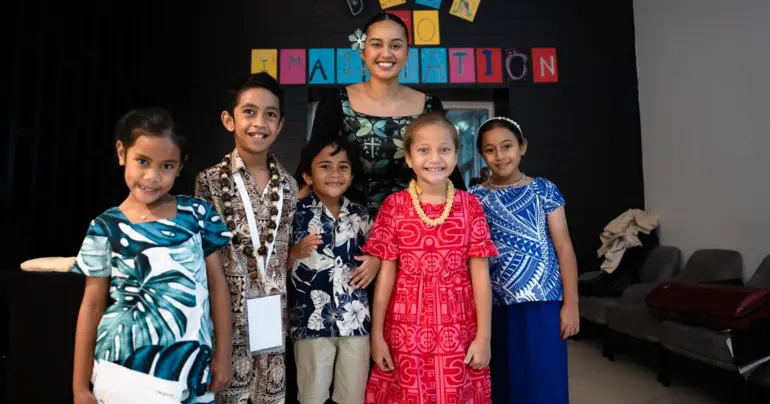Memoirs of Capt. Clarke: Before the jet age replaced the two grand ladies
In April 1889, the Union Steamship Company of NZ Ltd inaugurated a service with their steamship Mawhera from Auckland to Tonga and Samoa.
Since the company had many ships trading to the islands but the two classic vessels, which were dear to the hearts of many island travellers and traders, were the banana boats, M/V Matua and M/V Tofua. Both vessels were designed and built for the Pacific Islands trade for the carriage of passengers and bananas, which was the main export from the islands to New Zealand. The main role of these two vessels, especially the Matua before, during and after the war, was to keep the populations of Fiji, Samoa and Tonga supplied with their essential needs during the years they were without any other regular transport communication with the outside world.
Both vessels had accommodation for berthed passengers who ate in the salon with the officers, and in addition, catered for many deck passengers to enable Pacific Islanders to move between the Islands. As for the deck passengers, the discomfort of being housed on top of the aft decks under tents. They had to bring their own bedding and food for the time in days and not hours, for the voyage between the islands. Before the introduction of regular air travel from NZ to the Islands, these vessels were very popular with the travelling Samoans, Niueans and Tongans, braving the crammed conditions of deck passage to Fiji, where they could continue the journey to Auckland by plane and vice versa for those returning to their home island.
Deck passengers onboard one trip on the Tofua were members of the L M.S. Congregation placed on one hatch, while on another was a large group of Catholics. I have vivid memories hearing from the navigation bridge while on duty in the evening, the loud singing of hymns by the Protectants and the Catholics praying the Rosary. I did join them one evening over a few beers when I came off bridge duty at 0800pm and I needed to hear the latest gossip around Apia. The round trip from Auckland and back from the islands for both vessels was eighteen days and then ten days in port discharging island bananas, taro, etc, before loading for the various island ports. These ships were also a source of income for many island boys working as able-bodied seamen, motormen, stewards or galley hands. The late Peter Fabricius Sr. was the baker in the galley during my time on the Matua and later found a Meredith lad (Charlie) the steward for the senior officers on the Tofua. As for myself, after obtaining my first navigation certificate of competency in London, I found myself employed by the Union Steamship Company of NZ in London as a junior navigation and cargo officer for a two-year contract.
This gave me the opportunity to work on both ships as an officer, and I consider my time onboard to be the most treasured time of my maritime career. Held the rank of 3rd Officer and later 2nd Officer on the M/V Matua around 1963 to 1964, and in 1967 was Chief Officer on the M/V Tofua for eight months. During my time on the Tofua, I was able to observe the slow decline of the banana export market from Samoa due to the disease known as bungee top that was affecting the plantations.
The Matua was built in 1936 at Newcastle on the Tyne in England with a displacement of 4160 tons and a carrying capacity for cargo of 2500 tons, partially refrigerated for frozen goods from NZ and bananas from the islands... She was handed over to the Union Steamship Co. of NZ Ltd in June 1936. She had accommodation for 64 passengers and some 100 deck passengers on the voyages between the Islands. Apart from a few mishaps and the effects of cyclones, Matua was a very successful vessel and served the Union Company continuously for over thirty years.
The few mishaps during her many years in the islands were on the maiden voyage when she went aground on a reef in Aitutaki, damaging a propeller, and the following year she struck while negotiating the southern entrance to Nukualofa, when she again damaged a propeller. In January 1957 on the trip from Apia to Suva with 120 passengers, (60 cabin and 60 on deck), and a cargo of bananas she went aground on Duff Reef, 10 miles eastward of Wailangilala light in the Fiji Group and was towed off undamaged by the American destroyer, James E. Keys, one of four US war ships which answered the request for assistance. To the delight of all passengers, they were transferred to the destroyers, where they were well looked after and conveyed to Suva.
In March 1963, Matua’s worst experience with hurricane conditions occurred when a hurricane warning was received as she was en route from Suva to Nuku’alofa. The Master, Captain Peter Bennett, decided not to enter Nuku’alofa, so she hoved to West of Tofua Island. Matua was not able to avoid the centre of the storm, and she pitched and rolled in winds of more than 90 knots. The saloon passengers were confined to their cabins, and the 25 deck passengers, mainly for Apia transferred to the safety of the lounge. The winds were so strong that deck fittings around the bridge disintegrated and were blown overboard. Both the main radio and emergency aerials were demolished, putting the radio out of action until a temporary aerial could be erected when the weather abated. Fortunately, none of the passengers or crew were injured.
After the weather moderation, and with Nuku’alofa closed because of heavy seas, the vessel diverted to Apia for immediate repairs. Throughout her service, Matua was a popular vessel and was reputed to be a favourite of Her Majesty Queen Salote Tupou of Tonga and many from Apia who preferred this vessel to the later and more modern Tofua. She maintained her service to Fiji and Samoa throughout the war and carried many NZ troops to and from the Islands. Her good work was greatly appreciated by the South Sea Islanders, who presented her with a handsome plaque in recognition of her work. Matua continued in service until 1968 when she was sold to K. Shipping Corporation, Manila and renamed Sultan KL. She ran aground in a typhoon in Manila Bay in 1969 and was later salvaged and broken up at Kaohsiung, Taiwan, in 1970.
The last passenger and cargo vessel also designed and built for the trade to the Pacific Islands was the 5299 tons Tofua”. She was built at Dumbarton, Scotland in 1951 and made her maiden voyage from Auckland to Suva, Lautoka, Nuku’alofa, Vavau, Pago Pago, Apia and Suva on 21 December 1951 under the command of Captain N. H. Pearson. Alofi in Niue was included in her ports of call shortly after her maiden voyage. In all respects, she was better fitted out than the Matua, but most passengers who had travelled on both ships were uncomfortable in rough weather.
The Tofua had accommodation for 73 passengers with an allowance of 200 deck passengers. In December 1952, she carried a record 32,269 cases of bananas to Auckland. After 22 years of service to the Union Company, she was sold in 1973 to Hong Kong interests and renamed Tack Tai. In 1975, she was again sold, but this time to Chinese ship breakers for demolition at Shanghai. The Union Company did not replace these vessels, and it marked the end of an era in Pacific shipping due to the jet age and modern technology in cargo handling and containerisation.
The following are some of the events which happened during the trips on these two grand Ladies of the Pacific.
The first was an important occasion and was either just before Christmas 1963 or Independence Day 1964, when Apia was quickly running short of beer. The only beer in town was the American chemical, Miller's Ale, which, to most beer drinkers, was coloured water, and it did not give the desired effect of the real stuff from Europe. The Tofua had left Suva before the transshipped consignment of Becks Beer from Germany and Tennants Beer from Scotland, arriving from Europe. The Matua was a fortnight behind, and her ETA at Apia was a couple of days before this important day. There were frantic requests from Apia to the Master and Chief Officer to ensure in top stowing the beer crates for immediate discharge on arrival. It was the days before the new wharf, and the sight of the Matua coming into port and to some was like the Saviour had finally arrived and this important cargo was being discharged into lighters before the vessel was properly moored to buoys and anchors.
The second event was in 1967, the Coronation year for King Taufa’ahau Tupou IV of Tonga. The Tofua was the last ship into Nuku’alofa from Auckland before the coronation date, so it was very important that all cargoes for this special event must be onboard on leaving NZ. The manifest for Nuku’alofa had 4 very big white pigs in a crate each and the only place reserved for the carriage of livestock was the fore deck. When the Master, Capt Peter Bennett, was informed of this cargo, he immediately rejected it, for he was aware that at Suva, the full allowance of 200 deck passengers would board for the coronation. Also, each trip to Suva, we were committed to taking to Niue on behalf of the Department of the Island Territories at least 20 calves and goats.
It wasn’t long before an urgent message from the Union Company’s head office in Wellington was handed to the Master, instructing him of the importance of loading the pigs, for they were a gift from the NZ government for the King’s coronation. The pigs did make the trip and the goats to Niue, and it was not a pleasant trip for the 200 deck passengers housed on the after deck, especially if there was a headwind. The animals and the surrounding area of the fore deck were washed down 4 times a day while at sea and in port, except in Pago Pago, we were able to land them on the quay. The late Chief Kalolo Toleafoa of Lepea, who was a relative of mine, was given the task of feeding and washing down the royal pigs while in Apia.
The nightlife in Apia of those days gone past was very different from nowadays, and one of the most popular events in town for the young ladies was the social evening dance at the RSA Club when these ships were in port.
George Clarke served as a young sailor on the MV Matua and was the first Samoan to work on the ship. He later climbed the ranks and is recognised as a decorated sea captain. He was also the second head boy of Samoa College.











